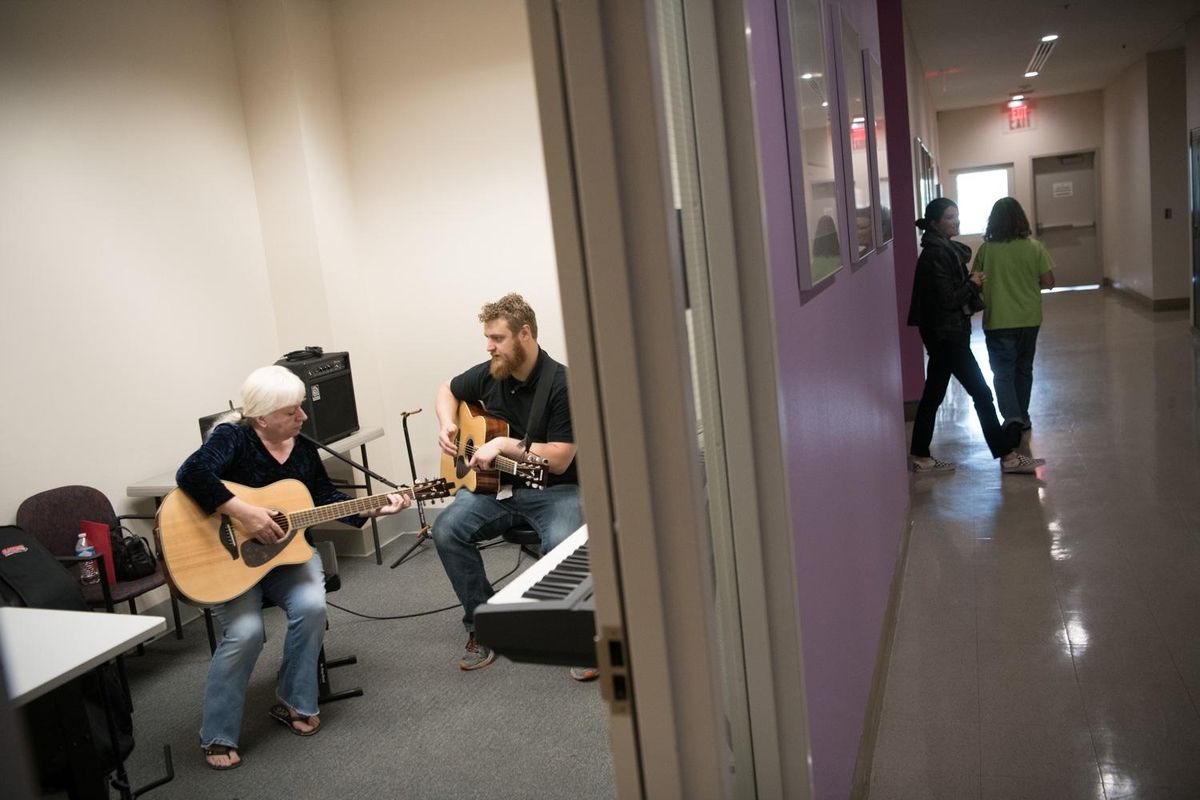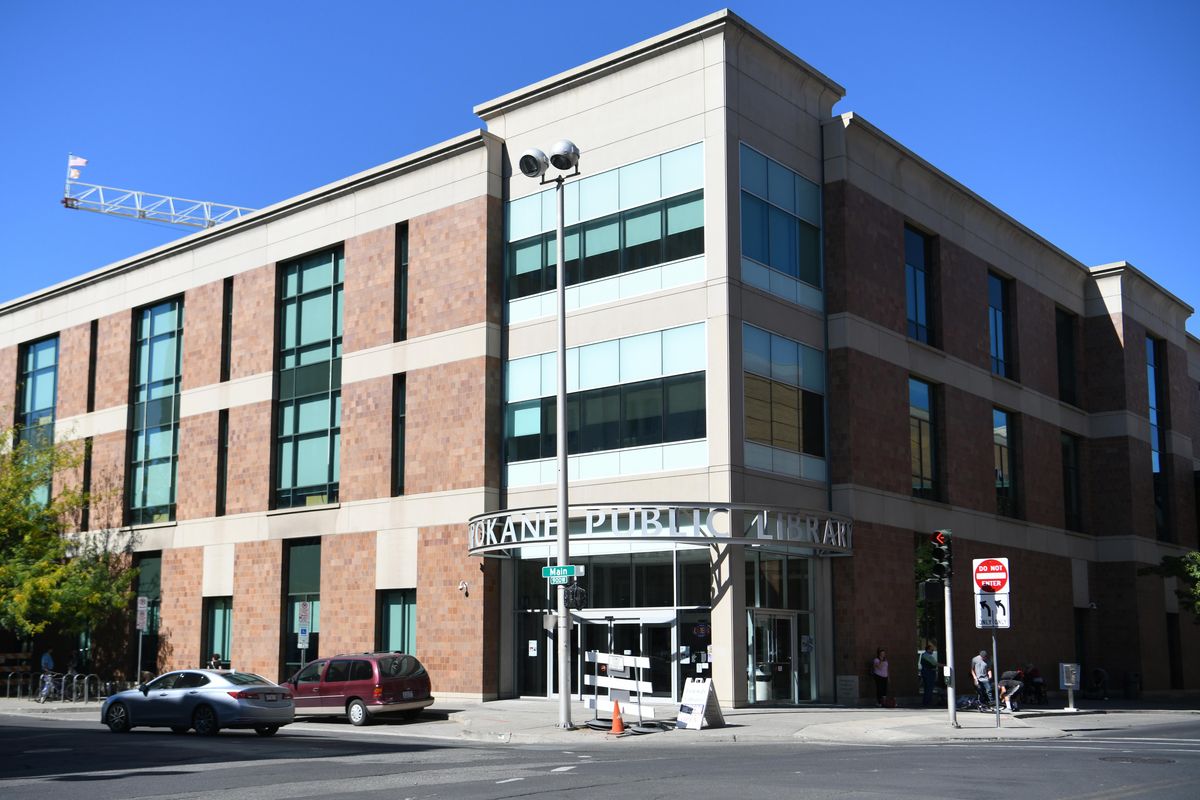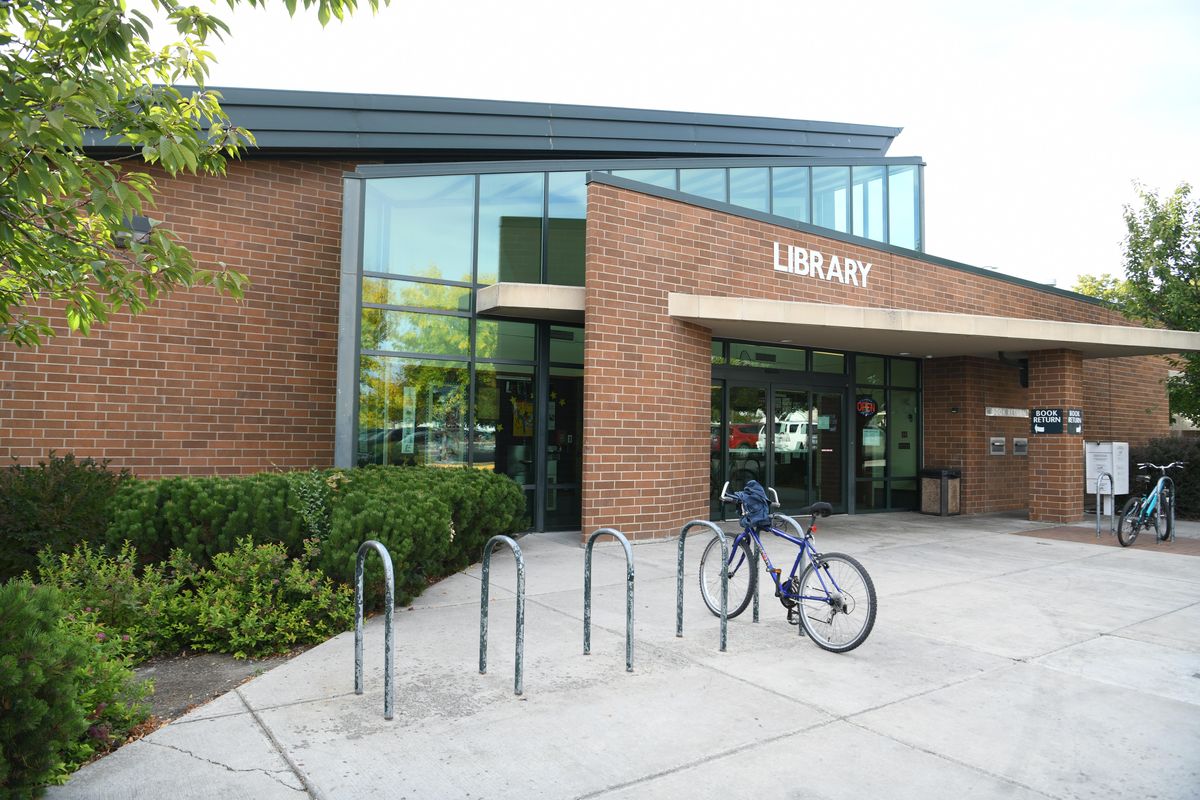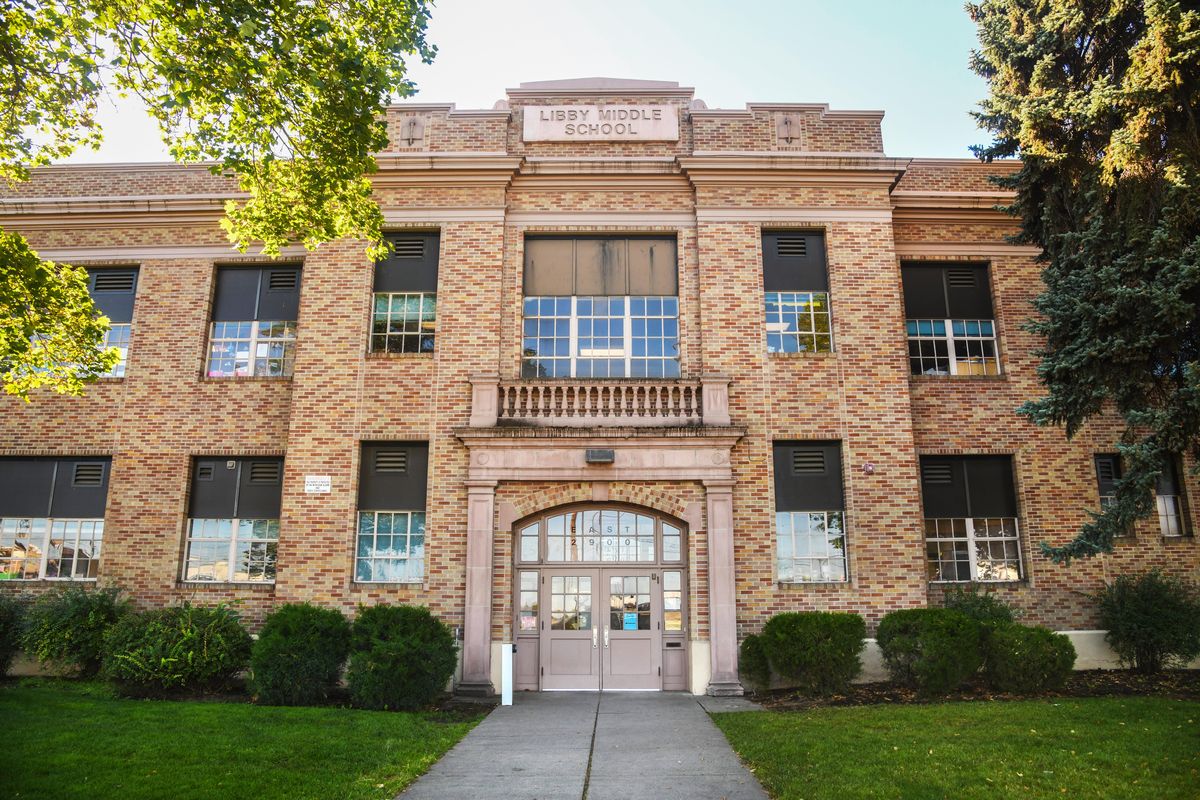Spokane libraries to ask voters for $77 million that will update branches and pay for new locations
The downtown Spokane Public Library branch shown Tuesday, Sept. 18, 2018. (Jesse Tinsley / The Spokesman-Review)Buy a print of this photo
Like many Spokane Public Library patrons, Jessica Rumley’s only access to the internet is through her phone and gaming device. Rumley, a mother and college student, said she likes borrowing science fiction books, but she needs to use the library’s printers, scanners and computers to turn in legal documents.
“There are things you can do on a computer that you just can’t do on your phone,” she said recently during a recent visit to the Hillyard branch.
That library, the second smallest in the city’s library system, is one of seven that would be substantially remodeled or replaced if a $77 million property tax bond is approved by voters in November.
Rumley said she likely will support the proposal, as long as Hillyard and other smaller branches see increased programming and services that tend to be centered at the main library downtown.
Spokane Public Libraries Director Andrew Chanse said boosting services at all locations – especially the neighborhood branches – is a major goal in the bond. The proposal, he said, is about keeping in step with developing technology, the community’s needs and equity.
The library estimates that renovations at the two largest libraries, the downtown and Shadle branches, would cost a combined $43 million to expand. The East Side branch would be rebuilt at Liberty Park, about five blocks from its current location, at a cost of an estimated $7.6 million. The Hillyard branch would become one of two collaborative facilities with Spokane Public Schools and cost $5.1 million to build. The second collaborative library would be built near the Libby Center, 2900 E. First Ave., and would host teacher training, events and function making it the second library in the East Central neighborhood, costing about $1.6 million. The South Hill and Indian Trail branches would receive smaller renovations and infrastructure updates, which would cost a combined $4.8 million.
The bond would increase taxes to Spokane residents by 19 cents per $1,000 of assessed property value.
While library program attendance, which includes story time, movie nights and classes, has nearly doubled over the last four years, the number of checkouts, visitors and internet sessions have mostly remained steady. Chanse said he hopes the improvements at all the libraries, which haven’t had major updates since they were built in the 1990s, will encourage people to use them more. He added that the renovations at the smaller branches might motivate people who have been using larger branches to visit their smaller neighborhood library.
Amanda Donovan, Spokane Public Libraries communications director, said the libraries plan to make large technology and building changes, but basic infrastructure such as roofing, shelving and disability access will be updated as well. She added that the heating and air conditioner systems break down regularly and staff are repairing rips and tears in the carpet with tape.
Most of Spokane’s libraries were remodeled or replaced between 20 and 24 years ago through a $28.9 million bond that was supported by 63 percent of voters. At 19 cents per $1,000 of assessed value, this year’s proposed bond would cost a taxpayer who owned a $240,000 home $45.60 a year and would mature in 25 years.
Maria Brown, a patron at the South Hill library, which will receive comparatively few renovations if the bond passes, said she doesn’t believe rebuilding libraries is worth the property tax increases. She said housing on the South Hill is already out of most people’s price range and she couldn’t support even small increases in property tax.
“Find a different way to improve services,” she said.
Brown said she doesn’t believe the buildings are an issue right now and the library should instead focus on improving staff service and programing.
Donovan said the designs for the libraries are only about 10 percent complete and some options, such as the location of the Hillyard library, are dependent on whether the Spokane Public School’s proposed $495 million school bond measure also passes in November. Among other improvements and updates, that bond would replace three middle schools and add an additional three middle schools. Library and school leadership still are discussing the amount each group would contribute to the new facilities.
Rumley said Hillyard’s children and young people need a free, safe place like libraries to spend the day and she supports increasing access. She is, however, concerned that the proposal to move the branch to the Shaw Middle School campus across the street would create security concerns and decrease access for low-income or homeless patrons.
Chanse said security is a priority and that library patrons would not have access to the school unless they are a student.
The bond would be added to property tax bills just as Spokane residents will see a reduction in their property tax due to the state legislature’s fix to a Supreme Court decision that ruled the state was not properly funding education. The net effect of the changes increased taxes in some school districts and lowered taxes in others. In the Spokane school district, even if the proposed school bond passes, the levy rate for all school taxes would fall from $7.92 per $1,000 in property value in 2017 to about $6.96 in 2020.
Donovan said the school district and the city library system are currently in discussion on how much library and school bond money would be used for the joint facilities at the Libby Center and in Hillyard. Superintendent of Spokane Public Schools Shelley Redinger said libraries and schools would work out more safety and daily operation details during the design process.
Library Trustee Lara Hemingway said free gathering spaces and technology can be hard to come by and the renovations will help the libraries serve Spokane’s evolving needs.
“It’s not a place where you go and get shushed anymore,” she said.
Both the Shadle and downtown libraries will stay at the same locations, but the planned renovations will significantly change their layout. Both would get cafes and more space. The downtown branch will open up the bottom floor, which is currently used for meeting rooms, storage and staffing. They also will create a better view of the Spokane River and will purchase furniture that is lighter and can be easily moved.
All the libraries would get improved children’s areas, shelving, meeting rooms and quiet spaces.
Chanse said most of the first year, if the bond passes, will be spent on design, and voters will begin to see more changes in 2020. The library estimates that the bond would result in an approximate $200,000 a year increase in the system’s operations cost, an amount that officials said would not require new taxes.
Roy Yates visits the Shadle branch almost every day and supports the library proposal. He spends most of his hours at the library reading the newspaper, building puzzles and visiting with other regulars. He remembers many of Spokane’s early libraries, which weren’t built with today’s technology in mind.
“I grew up when libraries were pretty dull places to go,” said Yates, a retired Hanford electrician. “But that’s not true anymore.”











